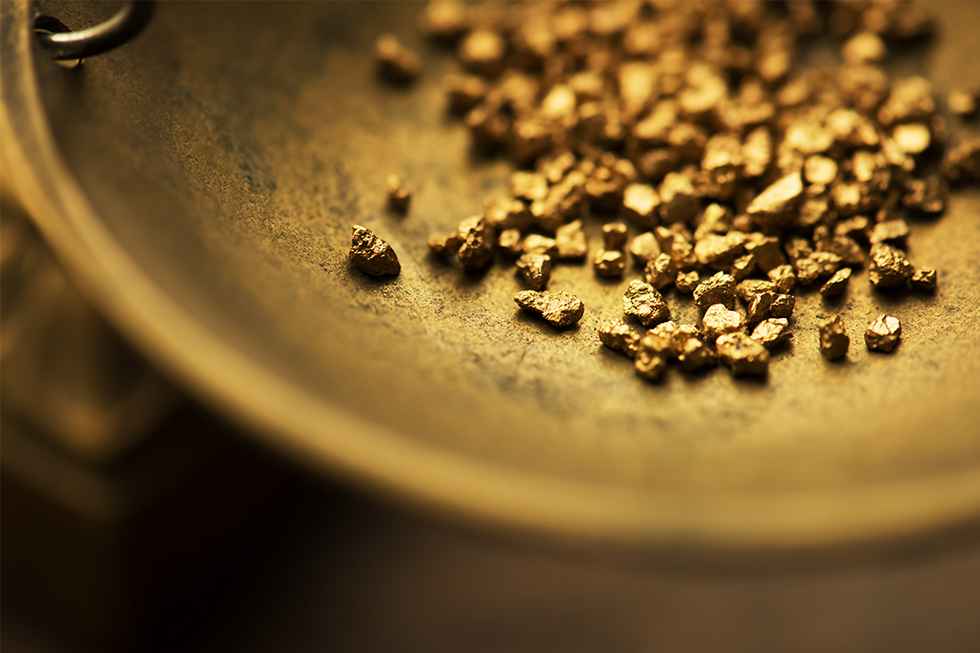Mining activity can have negative environmental impacts, and that concern very much applies to the extraction and processing of gold.
Gravity separation offers an ecologically friendly approach for certain mining applications — the geology and minerality of the ore has to be appropriate. Resource companies that are fortunate enough to have gravity-recoverable gold have the benefit of not requiring any chemicals to extract the gold — just the power of water and gravity. The water can be reused and recycled and the tails remaining after the gold is extracted is benign and can be safely stored as a sand pile.
An industrial method for separating two components that’s been around for centuries, gravity separation is used in many industries because of its low cost and high efficiency. In gold processing, it allows for the precious metal to be removed from ore quickly before being sent to a refinery.
How gravity works
Different substances have different specific gravities, which are impacted by their weight and density. Gold has a specific gravity of 19.3 compared to most host rocks, which are in the 2.8 to 4.0 range. Gravity separation takes advantage of this difference and uses various physics-based techniques to remove gold or another desired substance from ore.
This highly mechanical process can entail, firstly, the ore being crushed and then put through a sorter, where the waste rock is separated from the quartz that carries the gold. The gold material is then spun in a centrifuge to further separate and concentrate it. It is then run over a wet, oscillating table to further separate gold from the remaining ore. After that, the gold only needs to be melted down.
“There are no downsides. The process has a low environmental footprint, and is simple and cheap to undertake,” says Roger Jackson, executive chair of Vertex Minerals (ASX:VTX), a near-term gold producer and exploration company based in Australia.
Vertex is integrating a high-performance gravity processing plant adjacent to its Reward gold mine in New South Wales to facilitate a seamless processing of ore, resulting in one of Australia’s greenest, high-grade gold. The Reward mine is expected to begin production in early 2025.
Traditional gold extraction processes produce considerable arsenic, lead, mercury, cyanide and acid waste. One estimate suggests gold mining leads to 180 million tonnes of dangerous waste annually.
The gravity approach, however, requires no chemicals or cyanide and reuses water. There is some low sulfide residual material, but the acidity is low. The entire process uses little energy and the rock waste can be placed back underground as filler.
“Gravity plants are considerably simpler and cheaper than other gold processing plants,” says Jackson. The process can lead to enhanced recovery rates, efficiency and cost effectiveness.
Applying gravity
Vertex Minerals is installing a refurbished 110 ktpa Gekko gravity gold plant near its Reward gold mine, which is part of the company’s Hill End gold project in New South Wales. The plant is expected to reduce capital expenditures by AU$4 million.
With the integration of the gravity plant, Vertex expects to achieve several positive outcomes, including accelerated production timelines, increased throughput from 30,000 tonnes to a significant 120,000 tonnes per annum, enhanced operational efficiency with faster processing times and lower operational costs, and improved cash flow. More importantly, this project enables Vertex to conduct low-impact, sustainable mining practices, aligning with growing industry trends towards increased environmental responsibility.
Other projects engaging this ecologically friendly technique include Cobalt Blue Holdings (ASX:COB,OTC Pink:CBBHF), which first began testing the use of gravity separation in 2022 for the cobalt-pyrite mined at the Broken Hill Cobalt project in New South Wales.
Allup Silica (ASX:APS) has plans to use gravity separation for the McLaren Mineral Sands project in Western Australia. It has proposed a workflow to use gravity separation at a wet concentration plant to extract ilmenite, zirconium and higher-grade titanium minerals such as leucoxene.
Ore sorting along with wet jigging, which is a gravity separation technique, are planned for the Storm project in Nunavut, Canada. The project is an 80/20 unincorporated joint venture with Aston Bay Holdings (TSXV:BAY,OTCQB:ATBHF) and American West Metals (ASX:AW1,OTC Pink:AWMLF) to produce direct shipping products at the in-development copper mine.
Investor takeaway
Extraction and processing techniques have an environmental footprint that can impact the viability and profitability of mining projects in the short and long terms. Understanding how processes such as gravity separation can help the mining sector achieve efficiency, profitability and sustainability can aid investors in making informed choices.
This INNSpired article is sponsored by Vertex Minerals (ASX:VTX). This INNSpired article provides information which was sourced by the Investing News Network (INN) and approved by Vertex Mineralsin order to help investors learn more about the company. Vertex Minerals is a client of INN. The company’s campaign fees pay for INN to create and update this INNSpired article.
This INNSpired article was written according to INN editorial standards to educate investors.
INN does not provide investment advice and the information on this profile should not be considered a recommendation to buy or sell any security. INN does not endorse or recommend the business, products, services or securities of any company profiled.
The information contained here is for information purposes only and is not to be construed as an offer or solicitation for the sale or purchase of securities. Readers should conduct their own research for all information publicly available concerning the company. Prior to making any investment decision, it is recommended that readers consult directly with Vertex Minerals and seek advice from a qualified investment advisor.
Credit: Source link




